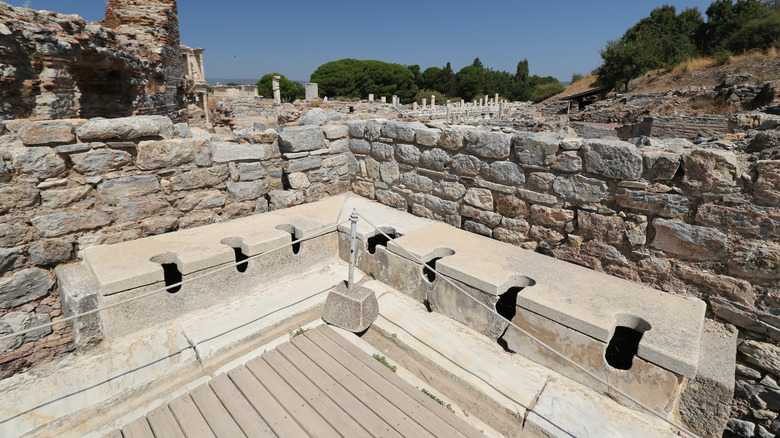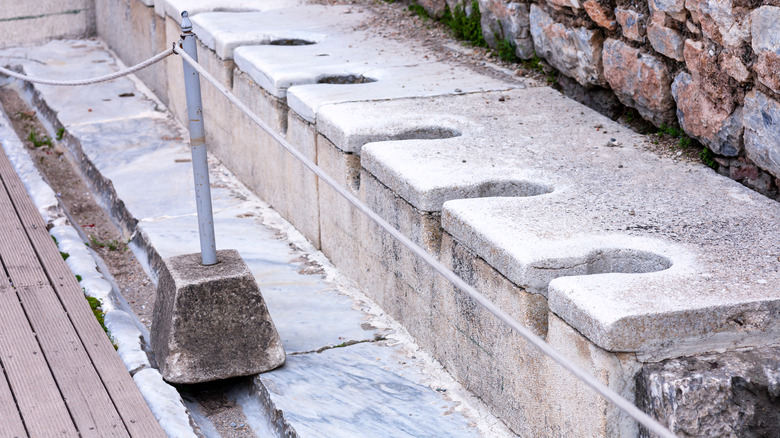The Fascinating Way Ancient Romans Used The Bathroom
Ancient Rome's engineering brilliance was such that many of its creations are still used today. As World History Encyclopedia reports, their roads were (and remain) a marvel: a network that crisscrossed the empire and covered a total of 120,000 km (nearly 75,000 miles).
Though the Romans didn't strictly invent some of their finest innovations (National Geographic reports that other ancient civilizations had aqueducts before them, for instance), they had an elegant way of solving problems and developing what had come before to unprecedented heights. Along the way, Roman engineers proved themselves some of the finest the world has ever seen.
The Romans had a very sophisticated system for providing water to cities, via a chain of said aqueducts. According to National Geographic, the city of Rome itself was supplied with water from up to 92 km (57 miles) away, and a network of around a dozen aqueducts was needed to provide it. For citizens, this meant public baths and drinking water, not to mention some rather unique toilets in the Ancient Roman bathroom.
According to History, toilet paper as we know it today was invented in 1857. New Yorker Joseph Gayetty introduced Gayetty's Medicated Paper to a grateful world, and that was that. This was many centuries too late for the Romans, however, who famously utilized a very unusual wipe: a sponge on a small pole, a cleaning device known as a xylospongium or tersorium.
A rather intimate and spongy bathroom experience
These were not the only options they had available. Philippe Charlier et al., in the paper "Toilet Hygiene In The Classical Era" (via Scientific American), explain that "fragments of ceramic known as 'pessoi' (meaning pebbles)" were also used for after-bathroom cleaning. Which actually sounds a little painful.
What of the bathroom arrangements from an architectural standpoint, though? As Smithsonian Magazine reports, Roman bathrooms tended to have a very unusual distinction: the individual toilets were often very close together. Lina Zeldovich, a journalist who visited the Turkish ruins of Ephesus, noted that a bathroom consisted of several holes laid out in lines on a bench of marble, enough for numerous people at once. Under them was a gutter, for obvious reasons, but Zeldovich also noted a gutter on the floor.
Ann Olga Koloski-Ostrow is an expert on the matter, having written "The Archaeology of Sanitation in Roman Italy: Toilets, Sewers, and Water Systems." Koloski-Ostrow explained, Smithsonian Magazine goes on, that the second water-flow was apparently for cleaning the aforementioned sponge after use. How efficient. As for the close proximity to other toilet-users, this wasn't such an issue for toga-wearers, who could keep everything concealed. "You actually could do your business in relative privacy," Koloski-Ostrow stated.

